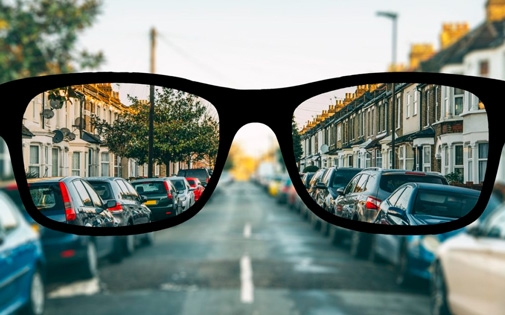MYOPIA
MYOPIA TREATMENT
Myopia (nearsightedness) is an ocular disorder in which the optical power of the eye is too strong for the corresponding axial length. Light rays from an object at infinity entering a non-accommodating myopic eye are converged too strongly and focus in front of the retina. This causes distant objects to blurry while close objects appear normal.

What are the Types of Myopia?
Myopia is seen in three types with a basic classification.
1 – Curvature Myopia
Curvature myopia refers to a type of refractive error that develops when the cornea is curved too much.
2 - Refractive Myopia
Myopia may occur due to diabetes and metabolic disorders. The refractive index of the natural lens of the eye may increase in the early stages of cataract which causes myopia.
3 - Axial Myopia
When the anterior and posterior axes of the eye are longer than normal, the image is formed in front of the retina. It is the most common type of myopia. Axial myopia is examined in two classes, simple and pathological.

4 – Simple Myopia
In simple myopia, the degree of myopia is less than 6 diopters. This type of myopia usually starts between the ages of 6 and 18. After myopia starts, it progresses for 3-4 years and then a pause may occur. Studies proved that the beginning age of myopia has a key role on the progression of myopia. In most cases, the increase of myopia may continue for 3-4 years depending on the elongation of the anterior-posterior axis of the eyeball. If there is a pause after that, it cannot be said it is absolute. However, as the elongation of the eyeball stops after the age of 21-22, the progression of simple myopia will also stop.
Genetic factors are known as an important cause of simple myopia. Generally, dominant genetic transition in low myopia and recessive transition in moderate myopia are observed. The first thing that draws attention in the eye examination is that the distance vision ability is very reduced. Distance visual acuity decreased in proportion to the degree of myopia.
5 –Pathological Myopia
Generally, these include myopia cases above 7 diopters. It can manifest itself with different complications. The corneal curvature of the eye may be reduced. Due to the excessive elongation of the anterior-posterior axis of the eyeball in the pupil, the retina covers the nasal area of the pupil and the blood vessels exit from the optic nerve by making a fold from the nasal area. Pathological myopia can affect many regions of the eye.

